Your cart is currently empty!
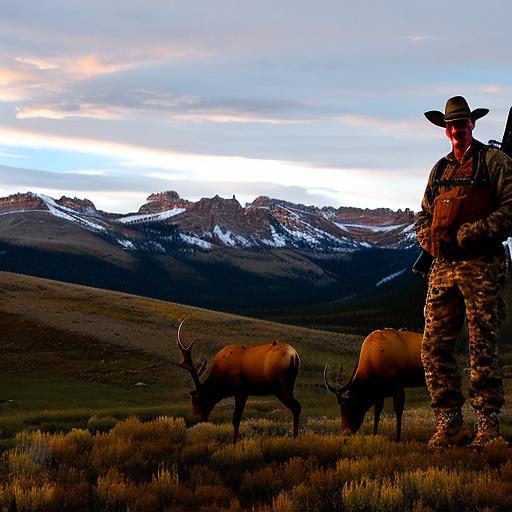
Conquering the Wild: My Epic Elk Hunting Adventure on Colorado’s Public Lands

Hunting is a thrilling and rewarding experience that requires preparation and planning. It is an activity that allows individuals to connect with nature, test their skills, and provide sustenance for themselves and their families. Colorado’s public lands offer a unique opportunity for hunters to explore and hunt in beautiful wilderness areas. With over 23 million acres of public lands open to hunting, Colorado is truly a hunter’s paradise. In this article, we will explore the wonders of hunting in Colorado’s public lands, from the thrill of the chase to the camaraderie of fellow hunters.
Key Takeaways
- Preparing for the hunt of a lifetime in Colorado’s public lands
- Tracking elk through the wilderness is a thrilling experience
- Hunting responsibly is crucial for preserving the environment
- Coping with altitude sickness and physical demands is a challenge in high altitude hunting
- Tips and tricks for taking down a bull elk and savoring fresh meat and memories
Discovering Colorado’s Public Lands: A Hunter’s Paradise
Colorado is home to some of the most diverse and breathtaking landscapes in the United States. From towering mountains to vast plains, the state offers a wide range of habitats for wildlife. With over 23 million acres of public lands open to hunting, there is no shortage of opportunities for hunters to explore and pursue their prey.
These public lands are home to a variety of wildlife, including elk, deer, bighorn sheep, and more. Elk hunting is particularly popular in Colorado, as the state has one of the largest elk populations in North America. The challenge of tracking and stalking these majestic animals through the wilderness is what draws many hunters to Colorado.
Before heading out on a hunting trip, it is important for hunters to obtain the necessary licenses and permits. Colorado has a lottery system for big game hunting licenses, so it is important to plan ahead and apply for licenses well in advance. Additionally, hunters must familiarize themselves with the specific regulations and restrictions for each area they plan to hunt in.
The Thrill of the Chase: Tracking Elk Through the Wilderness
Elk hunting in Colorado is not for the faint of heart. It requires patience, skill, and determination. The wilderness can be challenging, with rugged terrain and unpredictable weather conditions. However, the rewards of a successful hunt are worth it.
Tracking elk through the wilderness is an art form. It requires hunters to be in tune with their surroundings, to read signs and tracks, and to understand the behavior of the animals they are pursuing. It is a game of patience and strategy, as hunters must carefully plan their approach and anticipate the movements of their prey.
Once a hunter has located a herd of elk, the real work begins. Stalking within range of these wary animals requires stealth and precision. Hunters must move slowly and quietly, using the natural cover of the landscape to their advantage. It is a test of skill and nerve, as one wrong move can send the entire herd fleeing.
The Importance of Conservation: Hunting Responsibly to Preserve the Environment
| Metrics | Importance |
|---|---|
| Preservation of wildlife | Hunting responsibly helps to maintain a balance in the ecosystem by controlling the population of certain species. |
| Conservation of natural resources | Hunting responsibly promotes the sustainable use of natural resources such as forests, water, and land. |
| Economic benefits | Hunting responsibly generates revenue for local communities through hunting permits, taxes, and tourism. |
| Education and awareness | Hunting responsibly can educate people about the importance of conservation and the need to protect the environment. |
| Preservation of cultural heritage | Hunting responsibly can help to preserve cultural traditions and practices that have been passed down for generations. |
Hunting plays an important role in conservation efforts, as it helps to manage wildlife populations and preserve habitats. By hunting responsibly and following ethical practices, hunters can contribute to the sustainability of the environment.
One of the main reasons for hunting is to control wildlife populations. Without hunting, certain species can become overpopulated, leading to negative impacts on their habitats and other wildlife. By harvesting a limited number of animals each year, hunters help to maintain a healthy balance in ecosystems.
Hunters also contribute to conservation efforts through their financial support. The purchase of hunting licenses and permits helps fund wildlife management programs, habitat restoration projects, and research initiatives. These funds are crucial for maintaining healthy populations of game species and protecting their habitats.
In addition to following regulations and restrictions, hunters must also practice ethical hunting practices. This includes making clean and ethical kills, respecting the animals they hunt, and minimizing waste. Hunters should strive to make every shot count and recover all harvested animals.
The Challenges of High Altitude Hunting: Coping with Altitude Sickness and Physical Demands
Hunting in high altitude areas can be physically demanding and may cause altitude sickness. Colorado’s public lands are known for their high elevation, with many hunting areas reaching altitudes of 8,000 feet or more. It is important for hunters to be prepared to cope with these challenges and take necessary precautions to stay safe.
Altitude sickness, also known as acute mountain sickness (AMS), is a common condition that can affect individuals who are not acclimated to high altitudes. Symptoms can include headache, nausea, dizziness, and fatigue. To prevent altitude sickness, hunters should gradually acclimate themselves to higher elevations before embarking on a hunting trip. This can be done by spending time at progressively higher altitudes in the days leading up to the hunt.
In addition to altitude sickness, hunting in high altitude areas can be physically demanding. The thin air at high elevations can make even simple tasks feel more difficult. Hunters should be prepared for steep and rugged terrain, as well as long hikes to reach hunting areas. It is important to be in good physical condition and to train for the physical demands of high altitude hunting.
The Perfect Shot: Tips and Tricks for Taking Down a Bull Elk
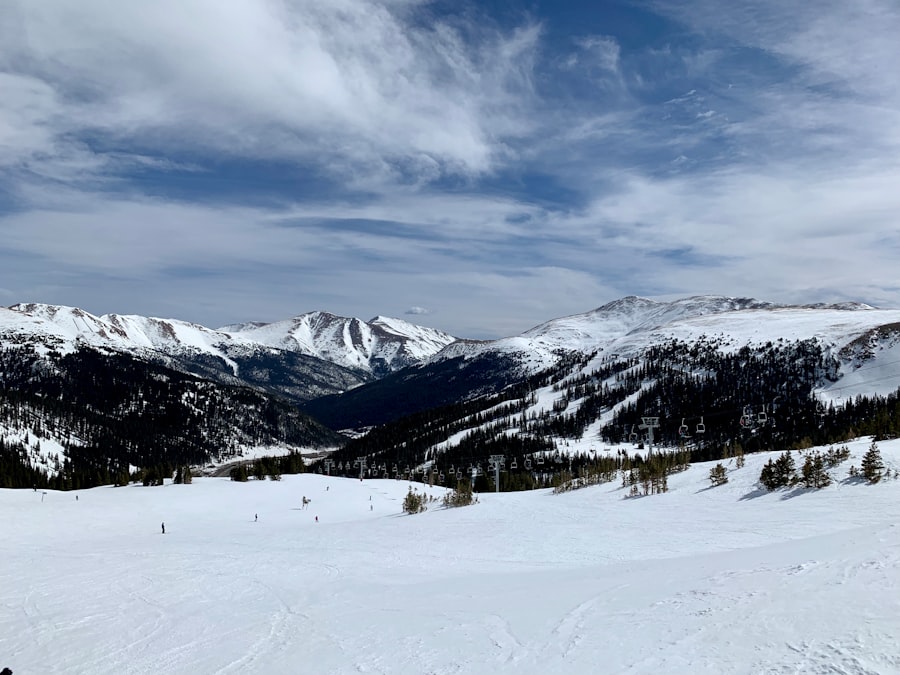
Taking down a bull elk requires skill and precision. It is important for hunters to practice shooting and become familiar with their firearms before heading out on a hunt. Additionally, hunters must learn the anatomy of the animal they are pursuing in order to make a clean and ethical kill.
When it comes to shooting elk, shot placement is key. Hunters should aim for the vitals, which include the heart and lungs. A well-placed shot in this area will result in a quick and humane kill. It is important to practice shooting from various positions and distances to ensure accuracy in real hunting situations.
In addition to shot placement, hunters should also consider the angle of the shot. Shots taken from above or below the animal’s level can result in poor penetration or deflection. It is best to take shots at a broadside or slightly quartering angle to ensure a clean kill.
The Rewards of the Hunt: Savoring Fresh Elk Meat and Memories that Last a Lifetime
One of the best parts of hunting is enjoying the fresh meat from a successful hunt. Elk meat is lean, flavorful, and nutritious, making it a popular choice among hunters and chefs alike. From steaks and roasts to sausages and jerky, there are countless ways to savor the fruits of a successful hunt.
In addition to the physical rewards, hunting also provides hunters with memories and experiences that last a lifetime. The thrill of the chase, the camaraderie of fellow hunters, and the beauty of the wilderness all contribute to a truly unforgettable experience. Whether it’s sharing stories around a campfire or reflecting on a successful hunt, these memories will be cherished for years to come.
The Camaraderie of Hunting: Building Bonds with Fellow Hunters and Guides
Hunting is not just an individual pursuit; it is also a social activity that allows hunters to bond with fellow hunters and guides. The shared experiences and challenges of hunting create a sense of camaraderie and community among hunters.
Hunting trips often involve spending days or even weeks in close quarters with other hunters. This provides ample opportunity for bonding and forming lasting friendships. Whether it’s sharing meals, swapping stories, or working together to track and stalk game, these shared experiences create a unique bond among hunters.
Guides also play an important role in the hunting experience. They provide valuable knowledge and expertise, helping hunters navigate the wilderness and increase their chances of success. Many hunters form lifelong friendships with their guides, returning year after year for new adventures.
Lessons Learned: Reflecting on the Experience and Planning for Future Hunts
Every hunting trip offers lessons and experiences that can be applied to future hunts. Reflecting on these experiences is an important part of the hunting process, as it allows hunters to improve their skills and plan for future trips.
After a hunting trip, it is important to take the time to reflect on what went well and what could be improved. Did you make any mistakes? Were there any missed opportunities? By analyzing these experiences, hunters can identify areas for improvement and make adjustments for future hunts.
Planning for future hunts is also an important part of the process. This includes researching new hunting areas, applying for licenses and permits, and preparing physically and mentally for the challenges ahead. By setting goals and creating a plan, hunters can ensure that they are fully prepared for their next adventure.
Encouraging Others to Explore the Wonders of Public Lands Hunting
Hunting in Colorado’s public lands is a unique and rewarding experience that everyone should try. It offers the opportunity to connect with nature, test your skills, and provide sustenance for yourself and your family. By following ethical and responsible hunting practices, hunters can help preserve the environment and create lasting memories.
Whether you are a seasoned hunter or new to the sport, Colorado’s public lands offer endless opportunities for adventure. From tracking elk through the wilderness to savoring fresh meat and building bonds with fellow hunters, the wonders of public lands hunting are waiting to be discovered. So grab your gear, obtain your licenses, and embark on the hunt of a lifetime.
If you’re planning an elk hunting trip in Colorado and looking for some tips on hunting public land, you might also be interested in this related article on “How to Hunt Pheasant” from Old Oak Syndicate. Pheasant hunting can be an exciting and challenging experience, and this article provides valuable insights on techniques, gear, and strategies to make your hunt successful. Check it out here!
FAQs
What is elk hunting in Colorado public land?
Elk hunting in Colorado public land refers to the activity of hunting elk in the public lands of Colorado, which are managed by the state and federal government.
When is the elk hunting season in Colorado public land?
The elk hunting season in Colorado public land varies depending on the hunting unit and the type of hunting license. Generally, the archery season starts in late August and runs through September, while the rifle season starts in October and runs through November.
What are the requirements for elk hunting in Colorado public land?
To hunt elk in Colorado public land, hunters must have a valid hunting license, a habitat stamp, and a big game tag for the specific hunting unit. Hunters must also follow the state’s hunting regulations and obtain any necessary permits.
What equipment do I need for elk hunting in Colorado public land?
Elk hunting in Colorado public land requires appropriate hunting gear, including a rifle or bow, ammunition or arrows, hunting boots, warm clothing, and binoculars. Hunters should also bring camping gear if planning to stay overnight.
What are the best areas for elk hunting in Colorado public land?
Colorado public land offers many areas for elk hunting, including the White River National Forest, the San Juan National Forest, and the Gunnison National Forest. Hunters should research the different hunting units and consult with local wildlife officials to determine the best areas for elk hunting.
What are the hunting regulations for elk hunting in Colorado public land?
The hunting regulations for elk hunting in Colorado public land include bag limits, hunting seasons, and specific hunting unit restrictions. Hunters should consult with the Colorado Parks and Wildlife Department for the most up-to-date regulations and requirements.

Herb has been a longtime lover of the outdoors. Whether it be hunting, camping, fishing or just getting outside to reset. Proud father and animal lover. Bourbon anyone?

by
Tags:
Comments

Categories
- Big Game Hunting (301)
- Deer (202)
- Reviews (3)
- Shooting (16)
- Slingshot (1)
- Small Game Hunting (42)
- Upland Hunting (126)
- Waterfowl Hunting (3)

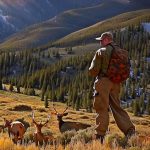
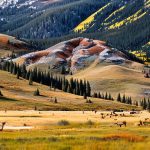
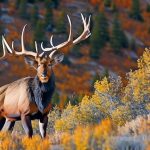
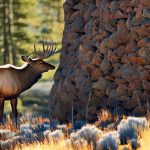
Leave a Reply